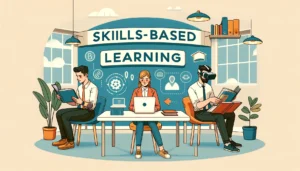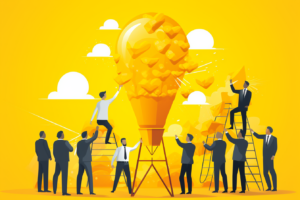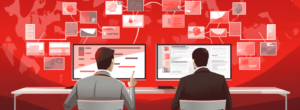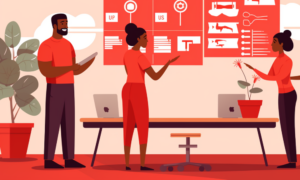Philip Morris International's total transformation and HR's role in making it happen
- 8 Min Read
Charles Bendotti, Senior Vice President, People & Culture at Philip Morris International, discusses the company’s huge transformation process – what’s changed so far and what’s next on the list for their organisation.
- Author: Michael Hocking
- Date published: Jun 17, 2019
- Categories

As the world changes, so must businesses – but Philip Morris International has seen more change than most. With the transition from tobacco to electronic products changing the way PMI operates in nearly every aspect, a major organisational transformation needed to take place.
I sat down with Charles Bendotti, Senior Vice President, People & Culture at Philip Morris International, to discuss this transformation process, what’s changed so far and what’s next on the list for their organisation.
What was the catalyst behind PMI’s current transformational journey?
We’ve been a tobacco-based organization for many years and now we’re completely transforming our business into one that is data-driven and based almost entirely upon science and technology. We launched the most commercially-advanced of PMI’s heated tobacco products called IQOS in Japan in November 2014. Our scientists spent 10 years in our labs, developing our science to create this product. Of course, after that, we needed to commercialize it. Our scientists hadn’t been working in isolation, but they worked separately from the rest of the organization and the knowledge we had about commercializing tobacco was not sufficient to commercialize these new electronic-based heated tobacco products like IQOS. Together as an organization we had to “unlearn” everything before we could learn what we needed for this new phase in our journey. That has become our mission over the last couple of years.
How does this process of unlearning work?
You need to start from the top. That’s one of the key learnings we’ve taken away from this process. You cannot ask an organization to do things differently, to behave differently, to allocate money differently, to operate differently, if you do not lead by example. And this change must come from within your organization and must be a top-down mentality, otherwise what you’re trying to achieve will have zero credibility across the organization.
How is PMI ensuring it is equipped for future success in how it organizes and engages employees along the transformation journey?
PMI has always been one a company where we “built up and developed our people from within”. So, in matters of employee engagement, with our business transformation we’re touching the entire backbone of the company.
The beginning of any transformation is like a change curve with negativity in the pre-phase as the organization faces a “reset.” People are often worried during this first phase, morale can be low and stress levels can increase due to the pressure and ambiguity that often accompanies major changes. While it’s important to help employees navigate these changes, it’s really important to reach a stage where you can “push the button” and the organization is ready to bounce back and move with you in the direction of the new business goals. And that’s when you see if you have a strong organization or not. Actually, transformation is all about preparation to be able to bounce from the bottom of the change curve and employee engagement is hugely important in achieving this.
With this in mind, I have a very specific understanding of engagement and I guess this comes from my background in marketing and sales. Before I took this job, I spent some time in California with start-ups, including Salesforce. Something very particular about their organizations is that the CEO is also the founder, and, as a result, has a massive influence on the character of the company. The CEO engages personally with the workforce to help bring the organization together. This led me to believe that we should take this one step further: by looking at engagement in the same way we engage with adult consumers.
Typically, engagement is comprised of several massive messages going through an organization, without any customization or targeting. For example, you might receive an email from the CEO or the head of HR explaining where the organization is headed, the strategy for doing so, and so on. But in the world we live in today working alongside digital natives, I don’t think this old approach will continue to work. Most people tend not to trust what comes from the organization, they only trust what comes from their peers. Over the last two years, we have been engaging in targeted communications tailored to different parts of our business. For instance, looking at senior management and workers on the factory floor, the type of messages they need to receive vary hugely and in general, people want to know two things: (i) tell me what this information means to me, and (ii) tell me how you can help me achieve our business goals with this information. This is what our 77,000 employees across the globe need to hear clearly from us every day.
We’ve identified that we must have those clear messages and try to be more contemporary in our engagement, using video and other digital tools to communicate with employees, which is much more engaging than typical corporate speech. But, at the end of the day, it comes down to one thing: measurement.
We measure engagement by sending a questionnaire to a separate part of our organization each month. This gives us a regular engagement score that we can use to measure engagement across each part of PMI. This means I get the level of engagement for my team worldwide (People & Culture), for the Finance department, and so on. This provides senior management with transparency, an ability to benchmark over time, and to create an employee engagement plan which they can tailor to different functions or regions, based on the survey results.
What else is needed as you undertake this drastic seismic change at PMI? What skills are needed and how is PMI attracting, developing and managing talent?
Attraction is, for me, priority number one in terms of PMI’s business transformation because we have to close that skills gap. This isn’t because our people aren’t skilled; it’s because we’re entering new domains of digital science and technology where we haven’t been before.
I’m not looking at this effort as a replacement of skills, but rather as an opportunity to add additional ones to complement those we have already at PMI. We’re bringing in talent that not only has skills and competencies that we didn’t have before at PMI, but that also has ways of working which are more aligned to the ways of working we want to have in the future so this is a win-win.
Last year, we also developed a full assessment of all our senior leadership team that we turned into a personalized development plan. This was built out of a six-hour online assessment which allows each leader to know exactly what their strengths are, and what gaps they need to fill. We’ve started by rolling this out with the top 200 in our organization, and now we can run it right across the organization, one by one. That’s where we’re headed: a customized development plan for every individual at PMI.
That’s because transforming an organization’s mindset must start at the individual level. Everyone has a very personal reaction to transformation so there are many specific needs that need to be met. Some people will love it and are agents of change by nature. For those people, you just need to make sure that they have the space to flourish. For others, it’s much more difficult. They may not feel as comfortable with a lot of uncertainty or a lack of clarity. Those people need more coaching, support and advice, and a forum to express their feelings and fears about the change. What’s important to bear in mind, given the pace and scale of transformation that PMI is undergoing, is that one size doesn’t fit all and you cannot successfully implement a transformation without your people – you must bring them with you.
What’s next in PMI’s HR transformation journey?
What comes next is delivery. We have developed the PowerPoint presentations and have a lot of things in our brand messaging, and the knowledge needed at senior levels in the company. Now, it’s time for the perfect execution of the plan. We have to stick to our strategy and deliver what we have talked about, because you don’t change behaviours or attract and develop new talent overnight. It cannot be programmatic – it has to be fully embedded in what we do across our entire organization. It’s a long journey but I’m very optimistic about what the future holds as we transform PMI from the inside out, on our journey toward building a future that is smoke-free.









